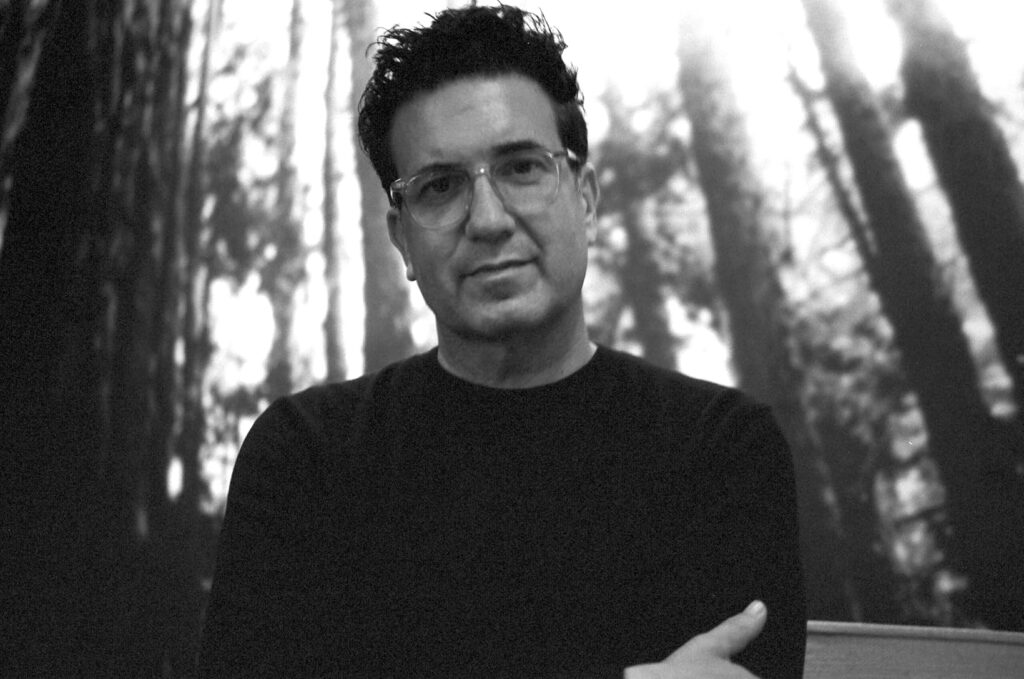Jaylan Salah, after reviewing The Serena Variations, sat down with director Warren Fischer.

Jaylan Salah: What compelled you to write this story?
Warren Fischer: The Serena Variations emerged from a personal exploration of the intersections between fine art, music, and the human psyche—areas I’ve long been fascinated by. My background in projects like Fischerspooner has always been about pushing boundaries, and this film felt like a natural extension of that journey. Drawing on my own experiences with music and the challenges that come with creative pursuits, I wanted to delve into the psychological impact of striving for perfection, particularly for a neurodiverse protagonist. The story reflects a very personal side of my life, and it’s my hope that it resonates with others who have walked similar paths.
JS: How do you think horror as a medium can be used by filmmakers for social commentary?
WF: Horror is a genre that has always intrigued me because of its ability to tap into our deepest fears and societal anxieties. When used thoughtfully, it can be a powerful vehicle for social commentary, allowing filmmakers to explore issues that are often left in the shadows. In The Serena Variations, horror helps to illustrate not just the protagonist’s internal struggles but also the external pressures that come with being neurodiverse. I was inspired by the way experimental cinema often uses unconventional methods to challenge viewers’ perceptions, and I tried to bring some of that energy into this film to evoke a deeper understanding of the character’s experience.
JS: Dylan Brown was amazing as Serena, how did the casting process go and was she your first choice?
WF: Dylan Brown was our first choice for Serena, and I feel incredibly fortunate that she agreed to take on the role. From the beginning, it was clear that her unique perspective and experience would bring an authenticity to the character that was crucial for the story we wanted to tell. The casting process felt more like finding the right partner for this journey than simply filling a role. Dylan brought a depth and sensitivity to the character that aligned perfectly with the film’s exploration of neurodiversity. Her commitment to the project was deeply inspiring and played a significant role in bringing Serena to life.
JS: How difficult was it to visit childhood memories for inspiration in creating The Serena Variations?
WF: Revisiting childhood memories was certainly a challenging process, but it was also essential to the authenticity of the story. These memories are woven into the fabric of the film, and they helped ground the narrative in something real and personal. Including actual recordings and images of my mother, as suggested by my editor, John Walter, was a way to bring a piece of my past into the present. It was emotional, yes, but it also felt necessary to connect with those experiences in order to tell this story with the honesty and depth it required.
JS: How do you think the film succeeded in showcasing the thin line between brilliance and madness?
WF: I believe The Serena Variations succeeds in exploring the thin line between brilliance and madness by immersing the audience in Serena’s internal world. The film’s structure and sound design were crafted to reflect her psychological state, creating an experience that mirrors the disorientation she feels. I drew inspiration from the experimental cinema tradition, where narrative boundaries are often blurred to reveal deeper truths. However, my approach was not to present this as a definitive statement but rather as an invitation for the audience to engage with the material in a personal and introspective way. It’s a complex subject, and I hope the film offers a nuanced exploration of it.
JS: As a storyteller, what is the most important theme that you want audiences to take from your film?
WF: The most important theme I hope audiences take from The Serena Variations is the resilience of the human spirit, particularly in the face of adversity and the pressures of artistic ambition. The film is a reflection on the cost of obsession, the sacrifices made in pursuit of perfection, and the challenges that come with being different in a world that often demands conformity. I wanted to create a narrative that respects the complexity of these experiences, and I hope viewers find something in Serena’s journey that resonates with their own lives. It’s not about offering easy answers but rather about opening a dialogue on these important themes.

JS: Which were the most difficult scenes to shoot?
WF: The scenes that required the most emotional intensity, particularly those involving the psychedelic experience, were among the most challenging to shoot. These moments were crucial to the narrative, serving as a turning point for Serena’s character. Capturing the balance between enlightenment and disorientation was essential, and it required a lot of trust and collaboration between the cast and crew. I was inspired by the experimental cinema tradition of using altered states of consciousness to explore deeper psychological themes, and I wanted to approach these scenes with a sensitivity that honored the complexity of those experiences.
JS: When you are overwhelmed as an artist and creative person, where do you find your footing?
WF: When I feel overwhelmed, I find grounding in the simple, everyday aspects of life—music, nature, and spending time with loved ones. These moments allow me to step back from the intensity of the creative process and reconnect with the core of who I am. It’s a practice rooted in mindfulness, something I’ve learned to value over the years. In the tradition of experimental cinema, where the artist’s process is often as important as the final work, these moments of reflection are crucial. They help me return to the project with renewed clarity and purpose, ensuring that my work remains true to my vision.
JS: In such an intense shoot, how do you as a director ensure the safety of your film set so that your actors would be able to become fully vulnerable while feeling completely safe?
WF: Creating a safe and supportive environment on set is something I take very seriously, especially when working on a project as emotionally intense as The Serena Variations. It’s important to me that everyone involved feels respected and supported, which is why I prioritize open communication and collaboration from the very beginning. Working with a neurodiverse cast and crew, including our lead actor Dylan Brown and editor John Walter, required particular attention to creating an inclusive and understanding atmosphere. The presence of intimacy coordinators and mental health professionals was invaluable in ensuring that the set remained a safe space for everyone. My goal was to foster an environment where the actors could explore their characters fully, knowing that they were protected and cared for throughout the process.
JS: What are you working on after The Serena Variations?
WF: After The Serena Variations, I’m excited to delve deeper into Serena’s story with a feature-length version that will explore her journey to process childhood trauma in more detail. This project will allow for a more expansive exploration of the themes that were central to the original film, particularly the intersections of identity, memory, and neurodiversity. I’m also beginning to explore a new project that examines the influence of technology on our sense of self, which feels like a natural progression from the themes I’ve been working with. Both projects are opportunities to continue pushing boundaries and exploring new ideas, always with the hope of creating work that resonates on a deep, personal level with audiences.





